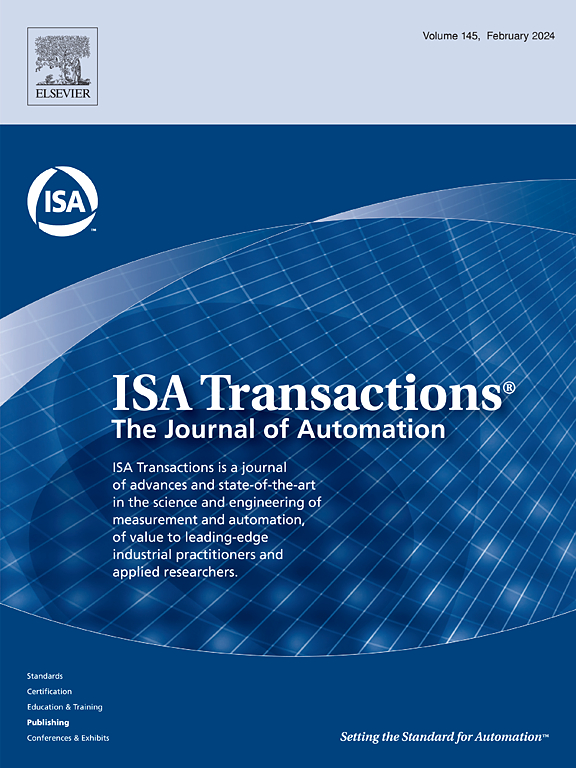多机器人协调悬架系统的空间多矢量多刚体避障规划。
IF 6.5
2区 计算机科学
Q1 AUTOMATION & CONTROL SYSTEMS
引用次数: 0
摘要
多机器人协调悬架系统(MCSS)面临着多体动力学强耦合导致的解耦困难、高维状态空间导致的计算复杂度激增以及多刚体系统避障规划方法缺乏等挑战。为了解决这些问题,提出了伸缩锥体结构(TPC)和多策略间歇泉启发算法(MGEA)。这些方法通过层次搜索和步进优化(HSSO)框架实现了多矢量和多刚体避障规划。MGEA通过混沌映射初始化、lsamvy飞行、差分进化和稳定性约束增强了全局搜索能力,而分层协同规划确保了防止电缆缠结和解耦多机器人运动。仿真和实验结果表明,MGEA优于基准算法,在混乱3D环境中保持零碰撞的情况下,轨迹长度减少16.35 %,计算速度提高13.74 %,最小适应度提高18.60 %。该方法为工业起重任务提供了有效的解决方案,并展示了可扩展性潜力。这些进展为动态非凸环境下的实时规划奠定了理论基础,解决了多机器人悬架系统应用中的关键挑战。本文章由计算机程序翻译,如有差异,请以英文原文为准。
Spatial multi-vector and multi-rigid-body obstacle avoidance planning for multi-robot coordinated suspension system
Multi-robot coordinated suspension systems (MCSS) face challenges such as difficulties in decoupling due to strong coupling in multi-body dynamics, computational complexity explosion caused by high-dimensional state spaces, and a scarcity of obstacle avoidance planning methods for multi-rigid-body systems. To address these issues, the telescopic pyramidal configuration (TPC) and the multi-strategy geyser-inspired algorithm (MGEA) are proposed. These methods enable multi-vector and multi-rigid-body obstacle avoidance planning via a hierarchical-search and step-optimization (HSSO) framework. The MGEA enhances global search capabilities through chaotic mapping initialization, Lévy flights, differential evolution, and stability constraints, while hierarchical cooperative planning ensures the prevention of cable entanglement and decouples multi-robot motion. Simulation and experimental results show that MGEA outperforms benchmark algorithms, achieving a 16.35 % reduction in trajectory length, a 13.74 % increase in computational speed, and an 18.60 % improvement in minimum fitness, while maintaining zero collisions in cluttered 3D environments. This method provides an efficient solution for industrial lifting tasks and demonstrates scalability potential. These advancements establish a theoretical foundation for real-time planning in dynamic non-convex environments, addressing critical challenges in the application of multi-robot suspension systems.
求助全文
通过发布文献求助,成功后即可免费获取论文全文。
去求助
来源期刊

ISA transactions
工程技术-工程:综合
CiteScore
11.70
自引率
12.30%
发文量
824
审稿时长
4.4 months
期刊介绍:
ISA Transactions serves as a platform for showcasing advancements in measurement and automation, catering to both industrial practitioners and applied researchers. It covers a wide array of topics within measurement, including sensors, signal processing, data analysis, and fault detection, supported by techniques such as artificial intelligence and communication systems. Automation topics encompass control strategies, modelling, system reliability, and maintenance, alongside optimization and human-machine interaction. The journal targets research and development professionals in control systems, process instrumentation, and automation from academia and industry.
 求助内容:
求助内容: 应助结果提醒方式:
应助结果提醒方式:


